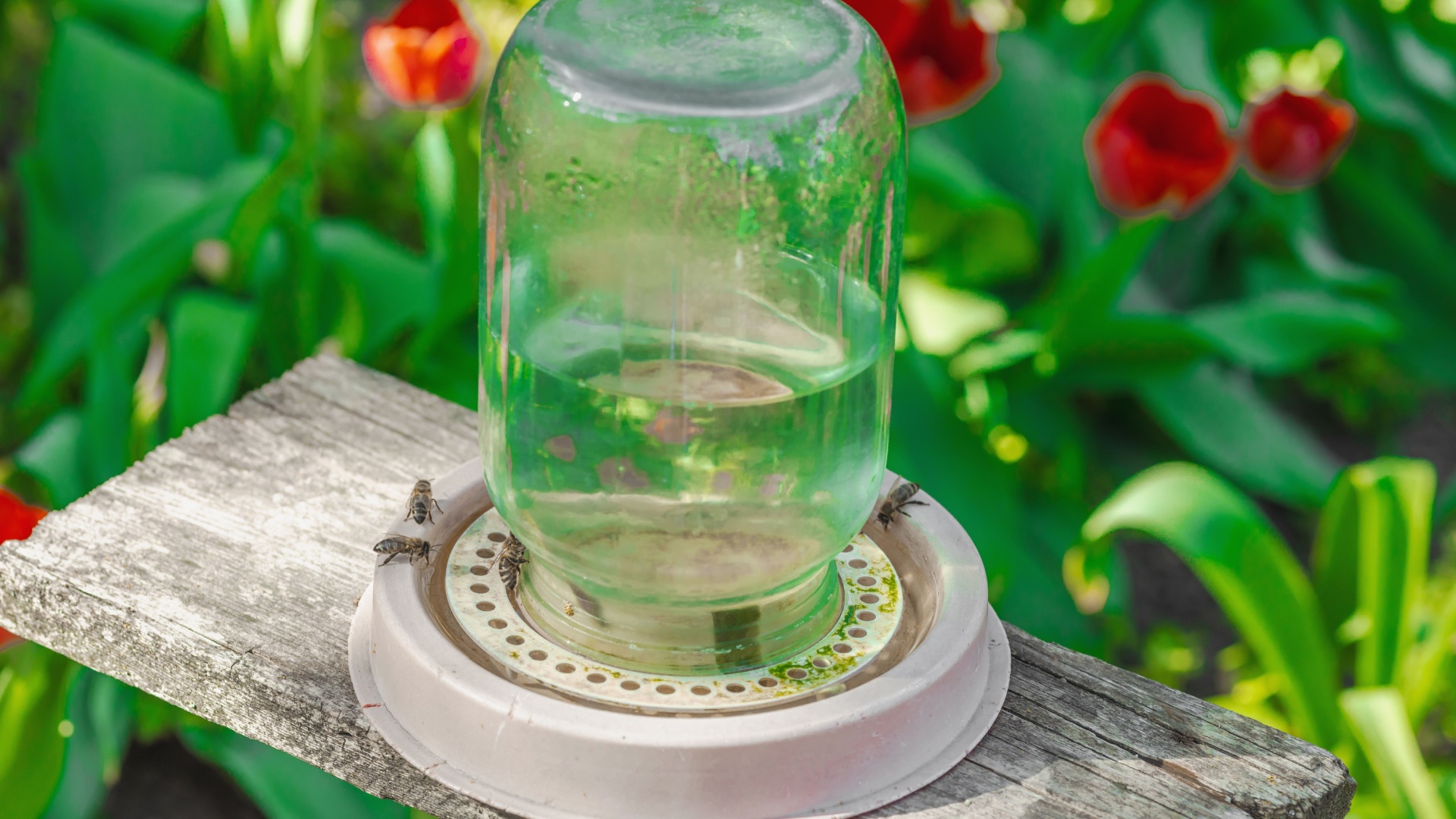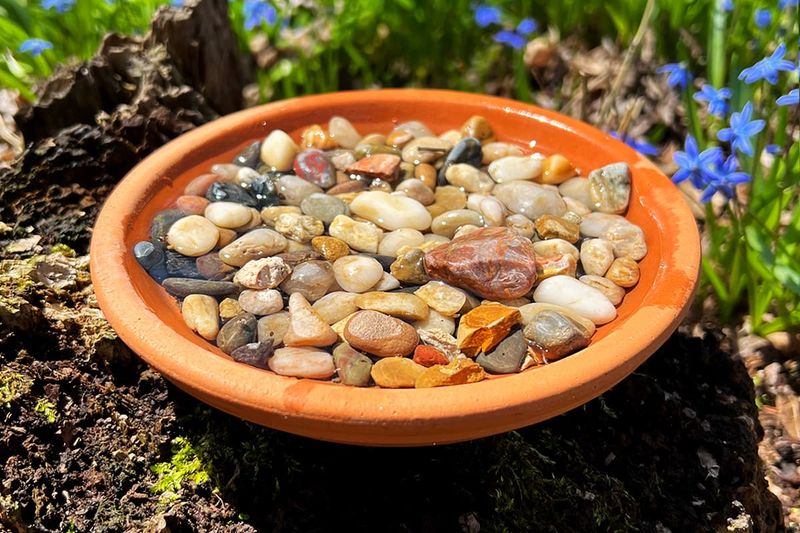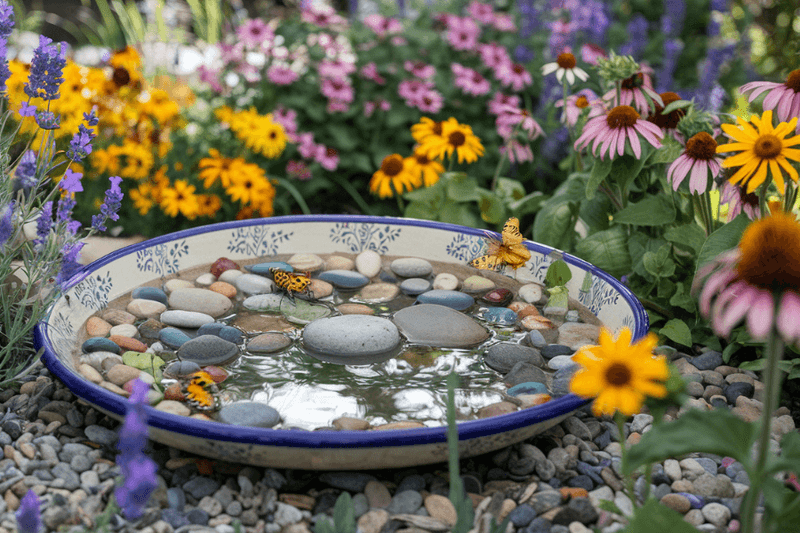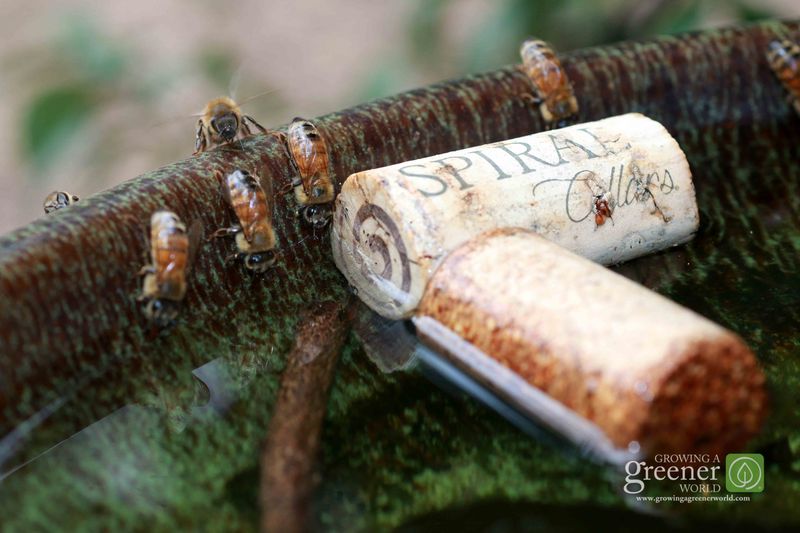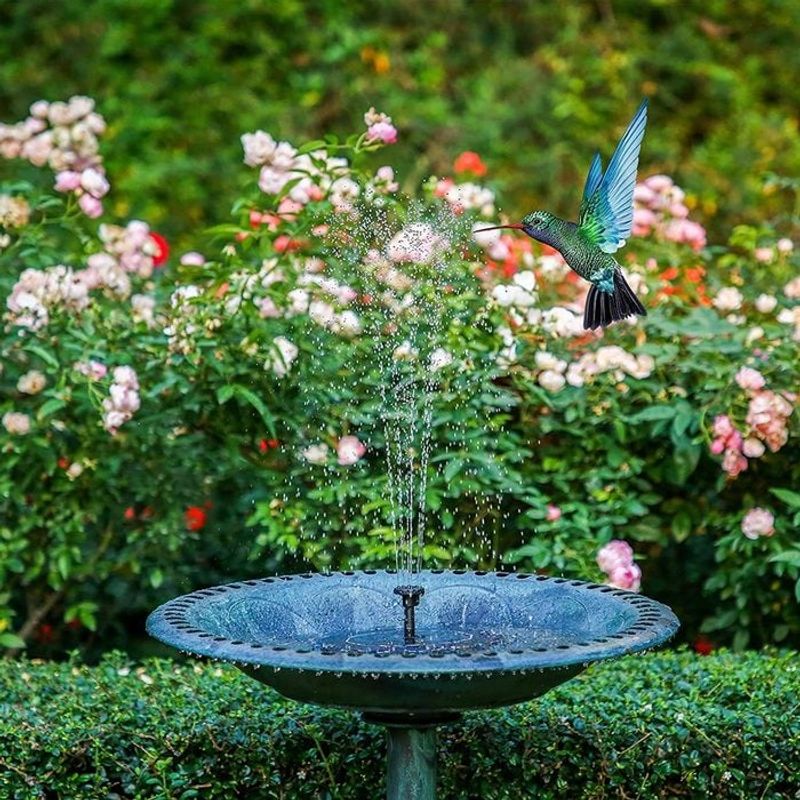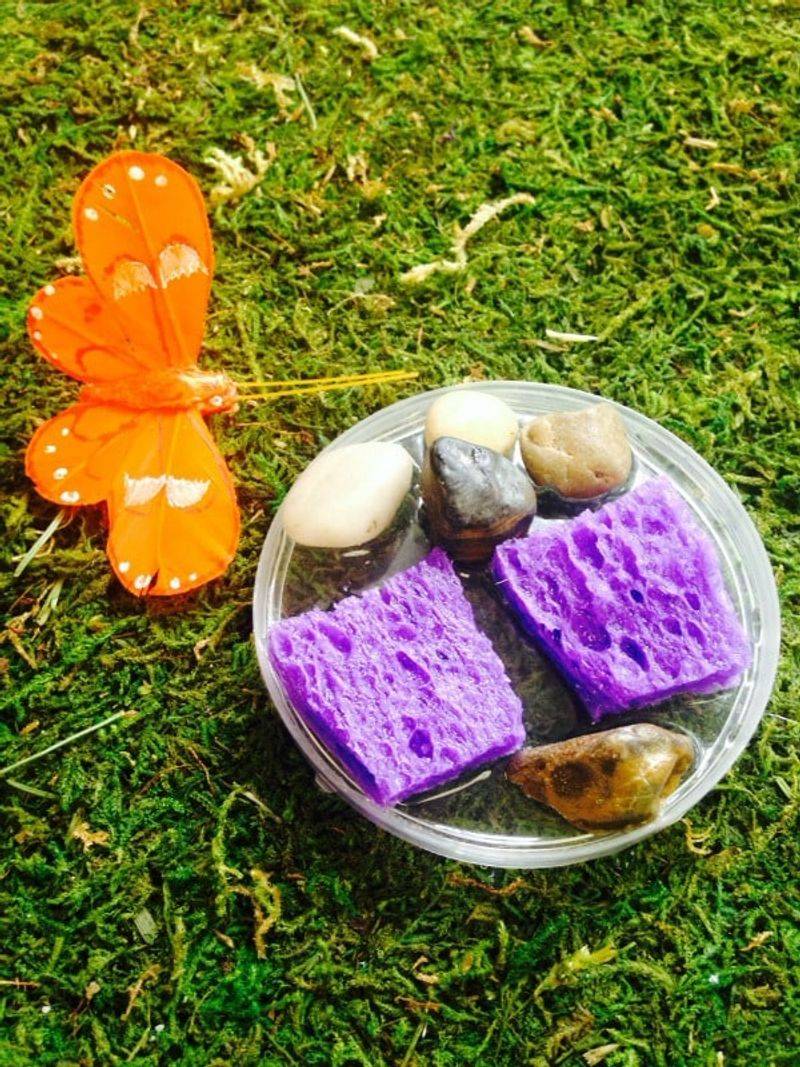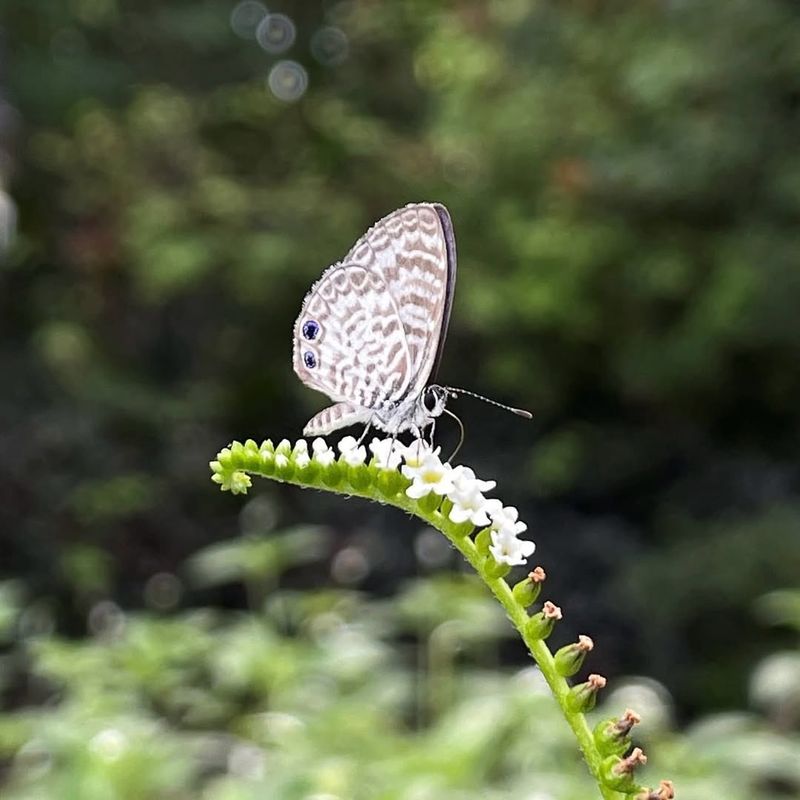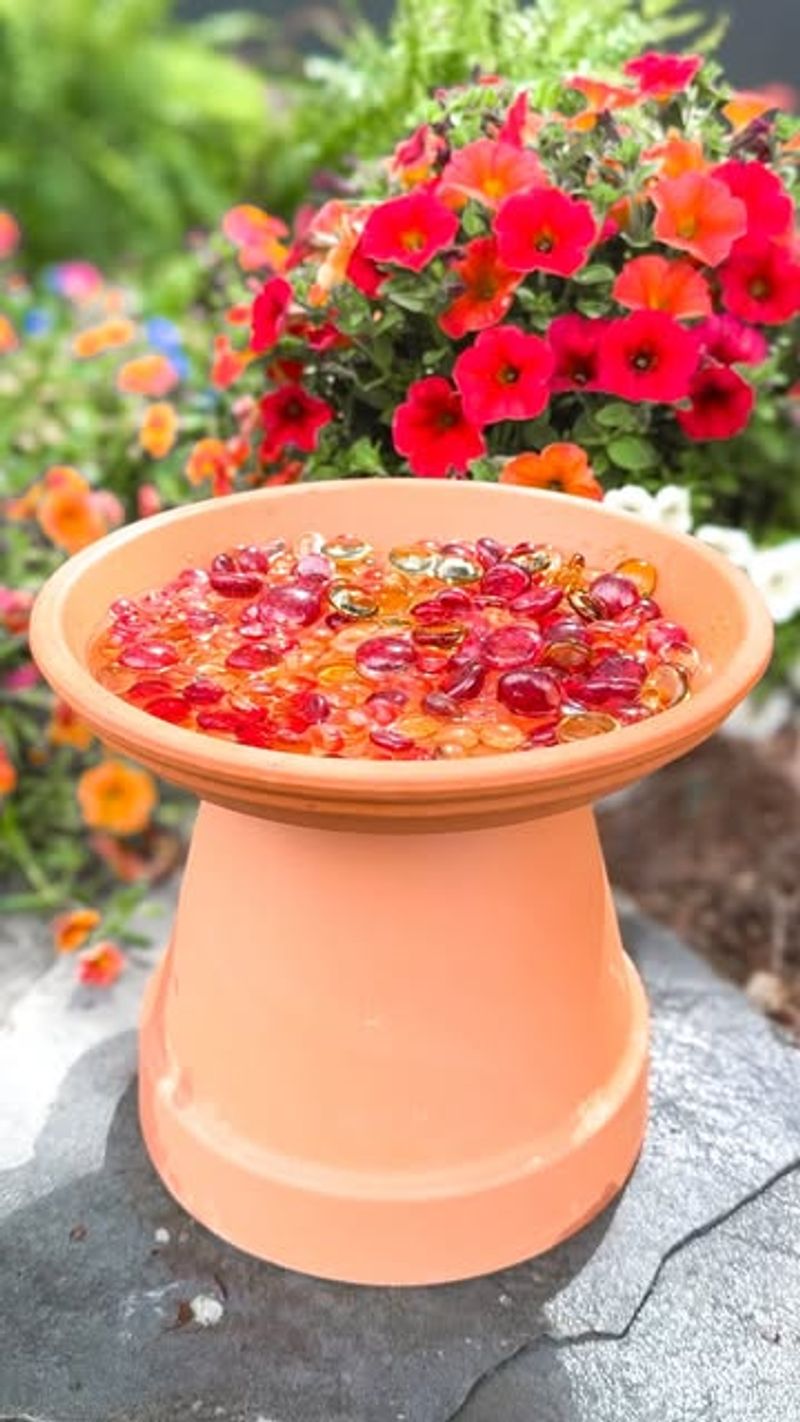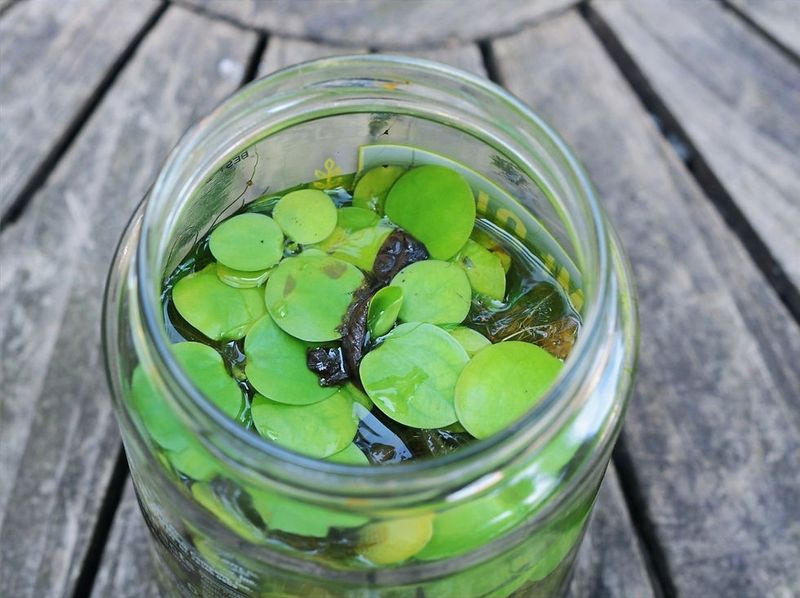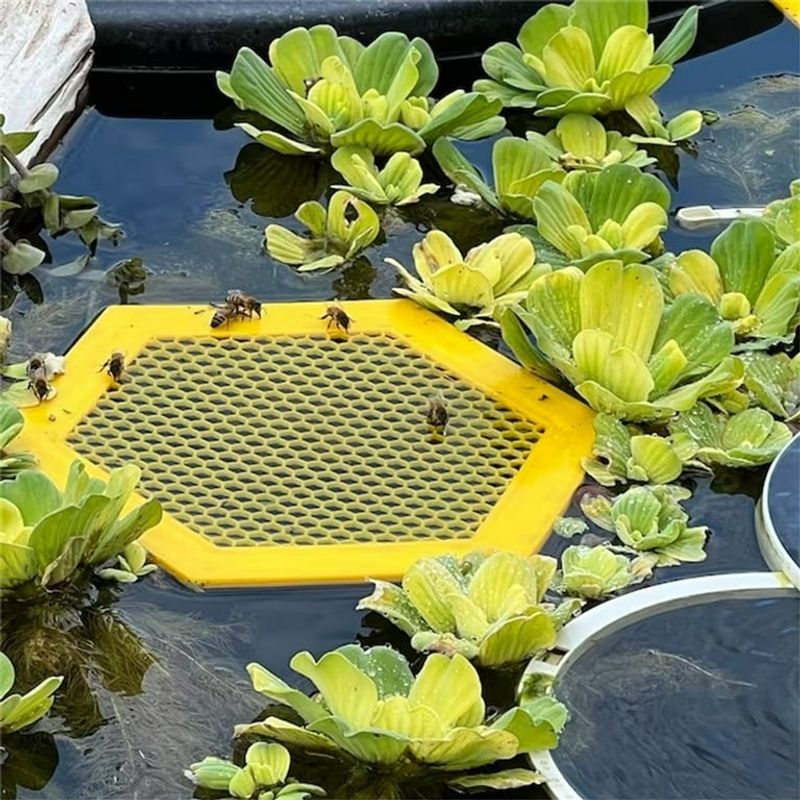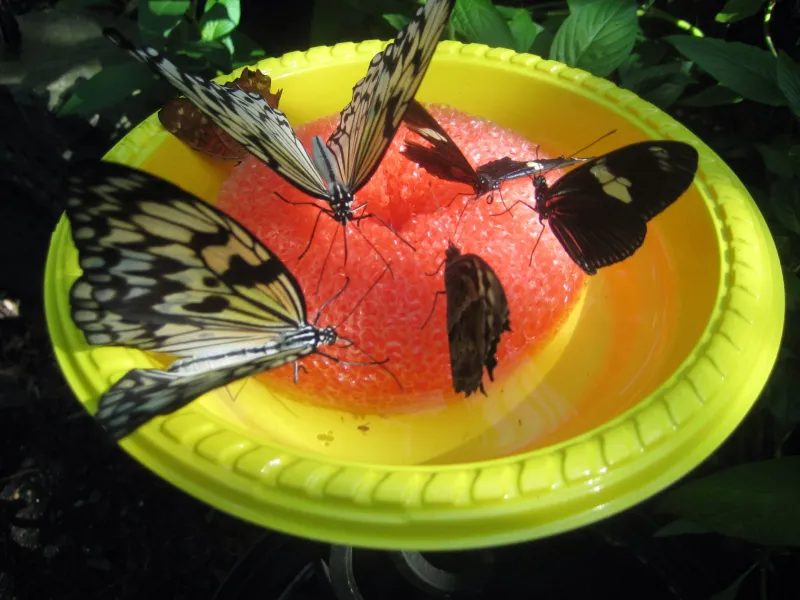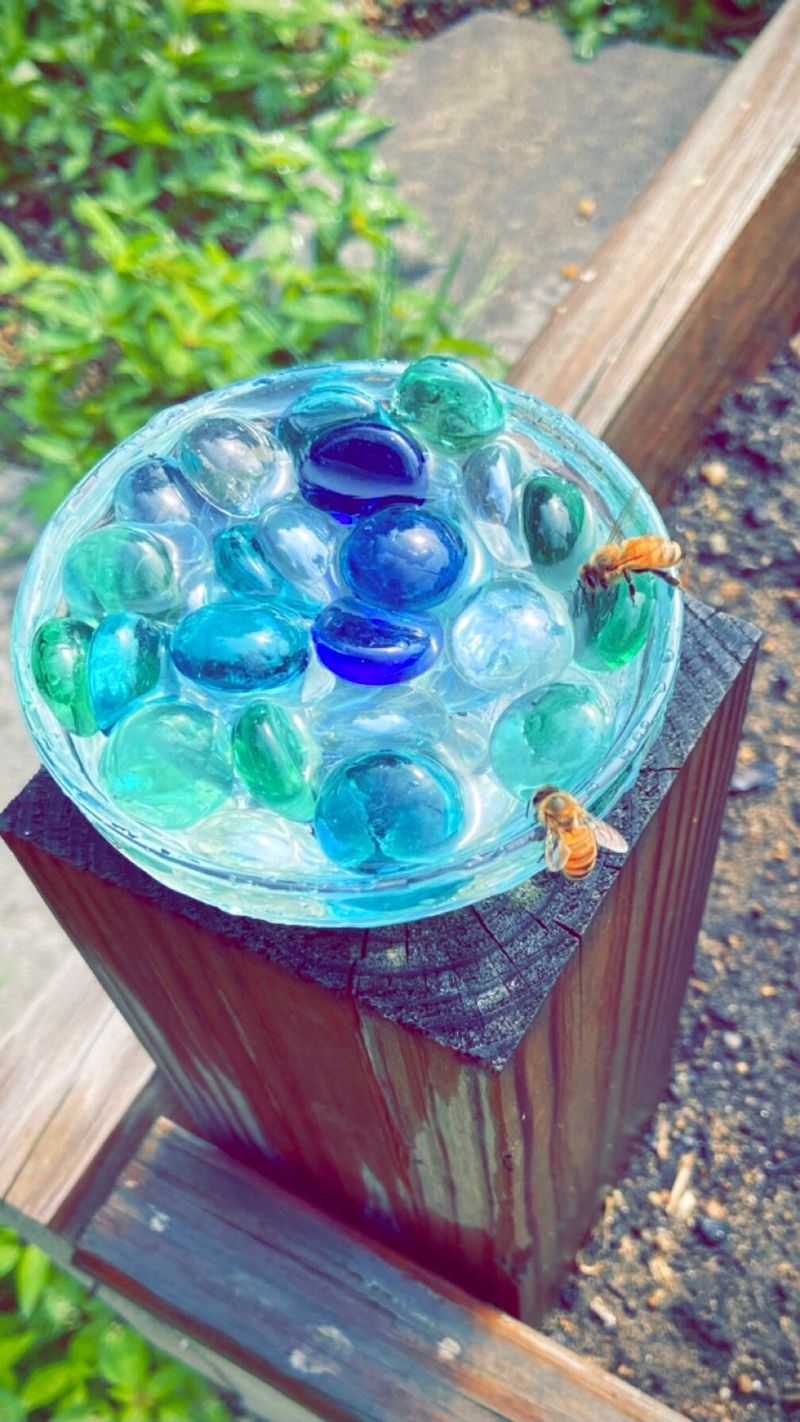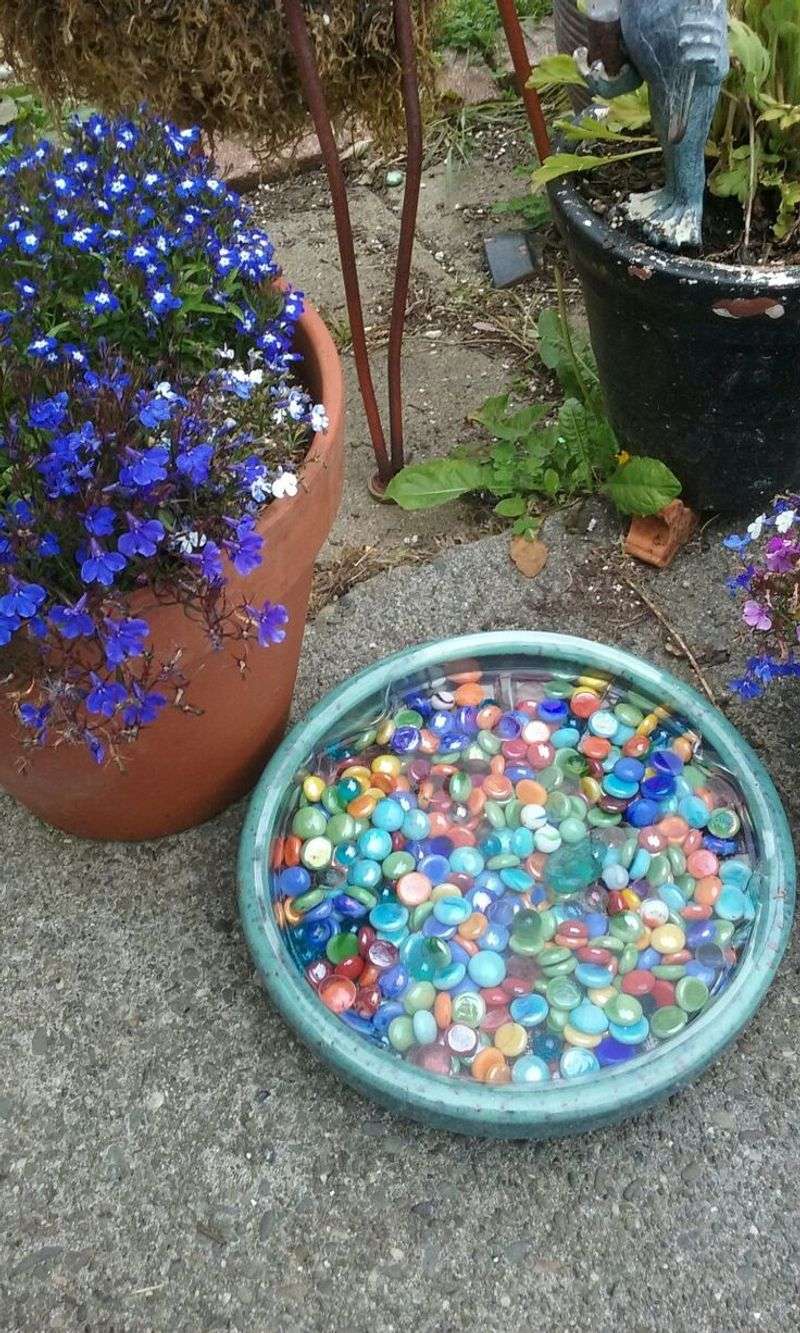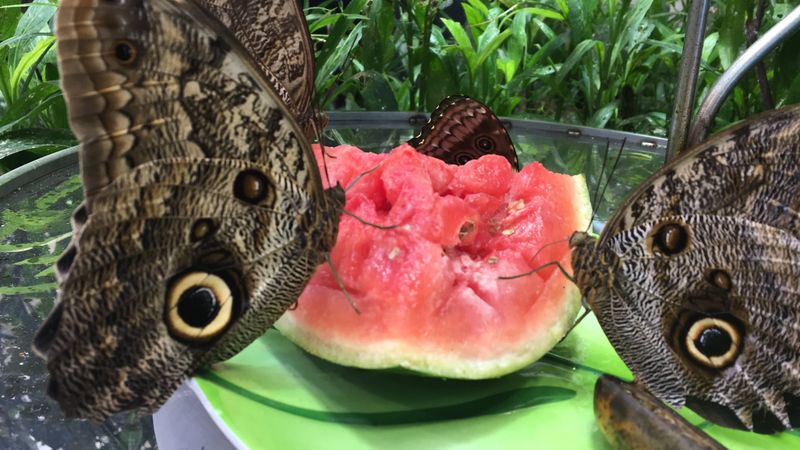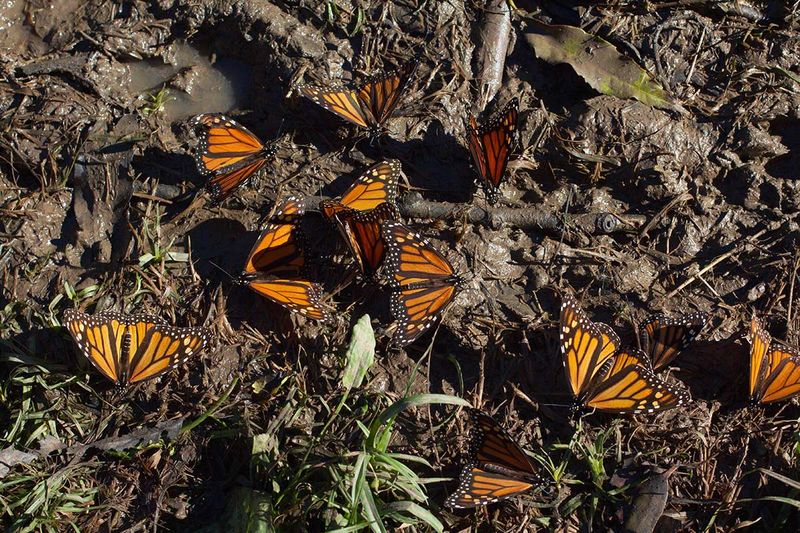Your garden isn’t just a pretty place—it can be a lifeline. Pollinators like bees, butterflies, and hummingbirds need more than flowers to thrive—they need safe, shallow sources of water.
These 16 creative backyard water station ideas are easy to make, beautiful to look at, and just what your buzzing, fluttering guests have been waiting for.
1. Shallow Dish with Pebbles
A simple ceramic plate or shallow dish filled with clean water becomes an instant pollinator oasis. Add colorful marbles or pebbles that rise above the water level, giving insects safe landing spots.
Bees can’t swim and will drown in deep water. The stones provide perfect perches where they can safely drink without falling in. Change the water daily to prevent mosquito breeding and algae growth.
2. Bird Bath with Landing Zones
Transform an ordinary bird bath into a multi-species watering hole by adding floating cork slices, water plants, or a layer of stones. These additions create perfect landing pads for insects while birds enjoy the deeper sections.
Place it in dappled shade to slow evaporation but keep it visible to passing pollinators. Remember to refresh the water every few days and scrub the basin occasionally to prevent slime buildup.
3. Butterfly Puddling Pool
Butterflies love mineral-rich puddles! Create a specialized butterfly watering station by filling a shallow container with sand and adding a salt solution (one teaspoon of sea salt per gallon of water).
Male butterflies especially seek out minerals they can’t get from nectar. Keep the sand moist but not flooded. Place your puddling pool in a sunny spot near butterfly-friendly flowers for maximum effectiveness and enjoyment.
4. Wine Cork Float System
Repurpose old wine corks into perfect floating platforms for thirsty pollinators. Slice corks horizontally and float these natural rafts in a water-filled container.
The corks provide stable landing spots while being completely biodegradable. Group several together for better visibility from the air. Wine corks work especially well because they’re sturdy and don’t deteriorate quickly in water.
5. Hummingbird Mister
Hummingbirds adore bathing in gentle sprays of water! Set up a mister attachment on your garden hose or install a small fountain with a fine spray feature.
Position it near flowers that hummingbirds frequent. The tiny water droplets help these birds clean their feathers and cool down during hot days. Many misters come with timers, so you can provide refreshing sprays without wasting water.
6. Sponge Water Feeder
A brightly colored sponge soaked in fresh water makes an excellent bee watering station. Place the damp sponge in a shallow dish or jar lid where bees can easily access it.
The sponge holds moisture while providing a textured surface for tiny feet to grip. Choose natural sponges when possible, and avoid those containing antibacterial chemicals. Replace the sponge periodically to prevent mold growth.
7. Hanging Water Dispenser
Create a suspended water station using a shallow container hung from a tree branch or shepherd’s hook. Add pebbles, moss, or floating elements to provide safe landing spots.
Hanging stations protect pollinators from ground predators like frogs or spiders. The movement also catches the eye of passing insects. Position it near flowering plants but away from bird feeders to prevent intimidating smaller pollinators.
8. Terra Cotta Saucer Stack
Stack different-sized terra cotta pot saucers to create a multi-level watering station. Fill the top saucer with water and pebbles, allowing it to slowly seep into lower levels.
The natural clay material helps keep water cool through evaporation. The varied heights accommodate different pollinator species. Add a bit of moss between layers for extra visual appeal and to create additional moisture-holding surfaces.
9. Mason Jar Dripper
Convert a mason jar into a slow-dripping water source by punching a tiny hole in the lid. Fill the jar with water, screw on the lid, and invert it over a shallow dish filled with pebbles.
The constant dripping creates fresh water movement that attracts pollinators. The sound also draws curious insects to investigate. Adjust the hole size to control flow rate – you want drops, not a steady stream.
10. Floating Plant Island
Create a miniature floating garden in a water-filled container using water lettuce, water hyacinth, or duckweed. These plants provide stable landing pads while naturally filtering the water.
The plants’ roots hang down, giving insects multiple surfaces to perch on. As a bonus, these floating plants help prevent mosquito larvae from developing. Just remember that some aquatic plants can be invasive, so research what’s appropriate for your region.
11. Butterfly Nectar Sponges
Combine hydration with nutrition by soaking natural sponges in a solution of 9 parts water to 1 part sugar. Place these sweetened sponges in shallow dishes around your garden.
Butterflies will drink the sweet solution while staying safely perched on the sponge surface. Replace every two days to prevent fermentation. This method is especially helpful during drought periods when flower nectar may be scarce.
12. Decorative Glass Stone Bowl
Fill a decorative glass bowl with colorful glass stones or marbles, then add water just below the top of the stones. The shimmering glass catches the sun and attracts curious pollinators.
The smooth surfaces give insects secure footing while they drink. Glass stones come in endless colors, so you can create beautiful arrangements that double as garden art. Position in a visible spot where you can enjoy watching your tiny visitors.
13. Solar Fountain Bee Oasis
Install a small solar-powered fountain in a shallow basin filled with pebbles. The gentle bubbling creates movement that attracts pollinators while preventing water from becoming stagnant.
The solar panel means no electrical cords or batteries to worry about. Many insects are attracted to the sound of moving water. Place in full sun for best operation and add a few larger flat stones around the edges as landing zones.
14. Vertical Water Wall
Create a living water wall using a wooden frame with chicken wire holding a layer of moss. Drip water slowly from the top using irrigation tubing connected to a small pump in a reservoir below.
The constantly moist moss provides perfect drinking spots for butterflies and bees. The vertical design saves space in small gardens. Add small air plants or ferns for additional beauty and landing zones.
15. Butterfly Fruit Feeder
Combine hydration with nutrition by creating a fruit feeder. Place overripe fruit slices like oranges, bananas, or watermelon in a shallow dish with a small amount of water.
The fruit provides both moisture and nutrients butterflies crave. Many species, especially comma and question mark butterflies, prefer fermenting fruit to flower nectar. Change fruit every other day to prevent mold growth.
16. Pollinator Mud Puddle
Create a designated mud puddle area using a shallow depression lined with plastic and filled with a mixture of soil, sand, and a pinch of sea salt. Keep it consistently moist but not flooded.
Many butterflies and bees extract essential minerals from mud. The salt adds extra nutrients they need for reproduction. Position in a sunny spot where the mud won’t completely dry out and replenish moisture during dry spells.

